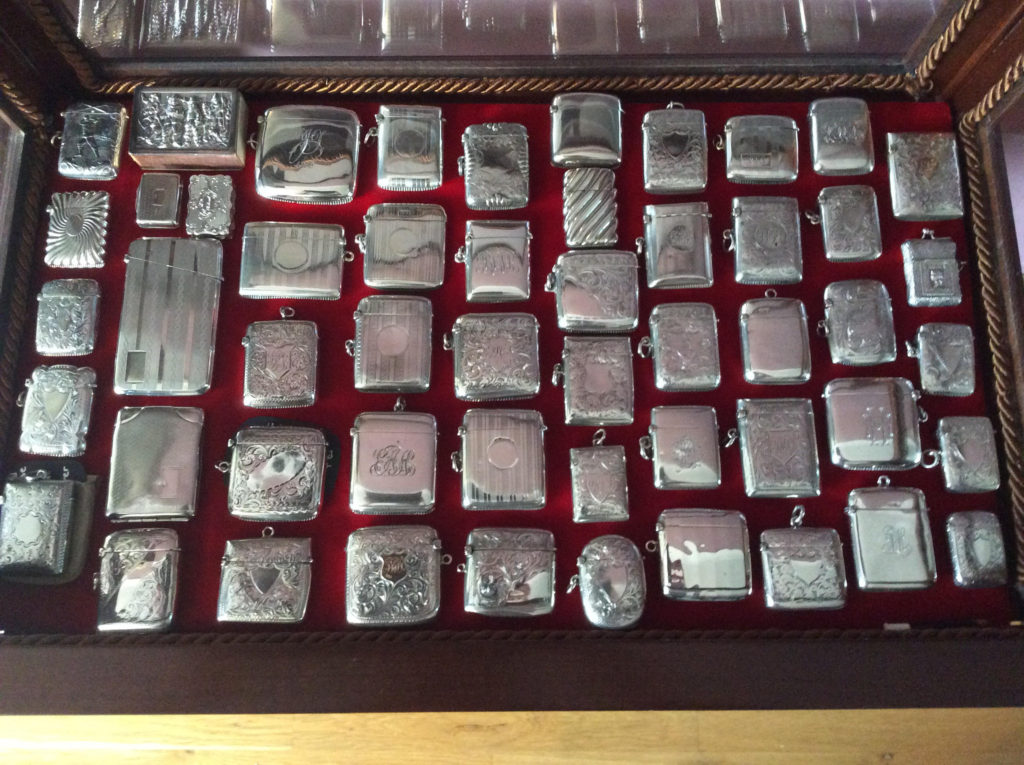Hungerford Arcade has an extensive clientele who return time and again in search for those elusive items wanted for their collections. Dennis and Margaret Ford were two such customers. Dennis collects beautiful solid silver vestas and has made a wonderful display case to show them off in all their glory. All the ones in the photograph were purchased at the Arcade by Dennis and Margaret on various visits. This time, they purchased two vestas to join the others in Dennis’ marvellous collection. I think he will now need to make another display case!

Dennis & Margaret Ford’s Collection of Vestas
Vestas
So called, after the name of one of the early makers (which was taken from the goddess Vesta, a Roman deity of fire and the hearth), such came into use around the 1830’s and were produced extensively between the years 1890 and 1920. During this period (of years), almost everyone carried strike anywhere matches, so they could ignite stoves, lanterns and other devices. Early matches were unreliable and prone to ignite from rubbing on one another or spontaneously. Accordingly, most people carried a match safe to house their matches. Wealthy people had ‘match safes’, made of gold or silver, while common folk had ones made of tin or brass.
Cooper Hewitt, Smithsonian Design Museum [Public domain]
Boot Matchsafe, late 19th century, with striker on sole. Silver with niello.
The Vesta
They were made throughout the world including the United Kingdom, the U.S.A., continental Europe and Australia. Significant English makers of vesta cases included notable silversmiths such as Sampson Mordan and Asprey & Co. Significant American manufacturers of match safes include Wm. B. Kerr, Gorham, Unger Brothers, Battin, Blackington, Whiting, George Scheibler and Shreve & Co.

